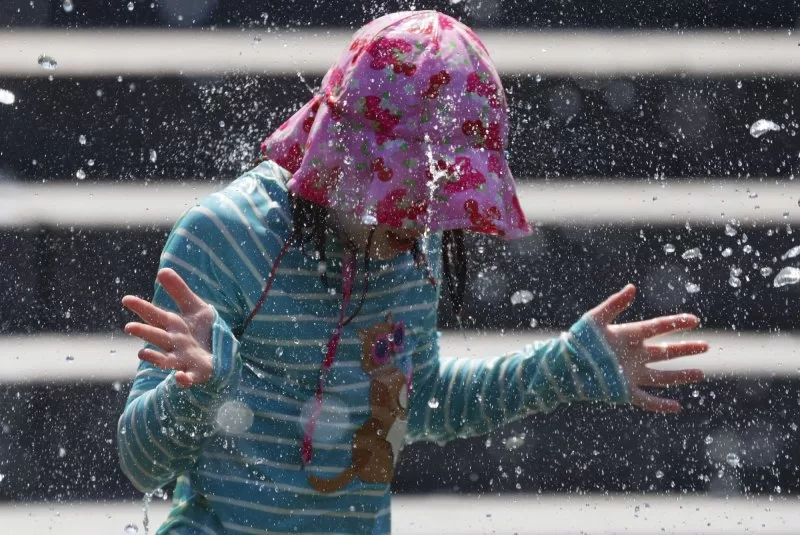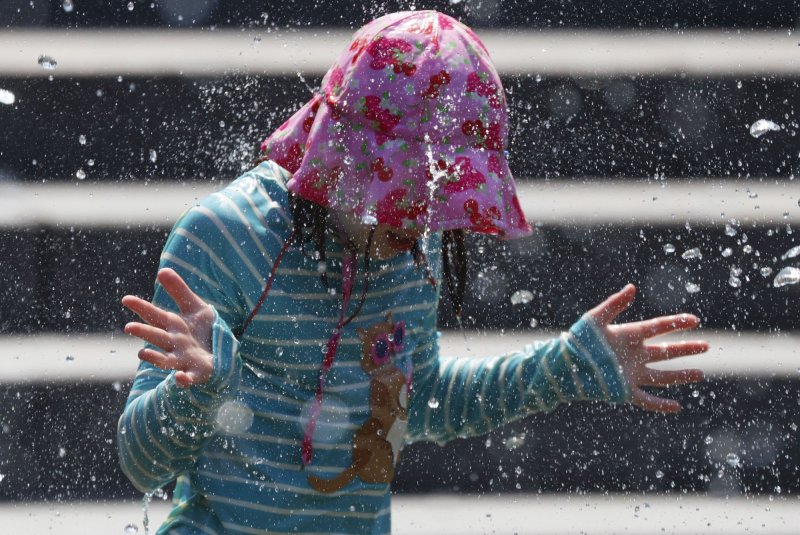A child cools off in the fountain at Washington Square Park in New York City on Wednesday, June 19, 2024. An excessive heat watch has been issued for a large portion of the country during Independence Day. Photo by John Angelillo/UPI |
License PhotoJune 30 (UPI) — The Fourth of July is shaping up to be one of the hottest in recent history across most of the country.
High temperatures are forecast to be in the triple digits in California and California. In the Phoenix area, the mercury is projected to be near 115 degrees on Independence Day and beyond. Same for cities in California’s San Joaquin Valley and Palm Springs. Even as far north as Sacramento, the mercury will reach 112.
Numerous record temperatures are expected to fall. Scorching heat and high humidity levels in the deep South will make it feel like 120 degrees in New Orleans.
The heat index, also known as the apparent temperature, is what the air feels like to the human body when relative humidity is combined with the ambient temperature, according to the National Weather Service.
Much of the East Coast is under a heat advisory. In the Carolinas, the heat index will reach 110 on Sunday. In Virginia it will feel like 108. Philadelphia and central New Jersey will feel like 103 on Sunday.
Parts of the Southeast and West will see temperatures 5-10 degrees above the historical average, according to Accuweather. Temperatures are forecast to touch the lower 90s in New York City, nearly 10 degrees above the historical average for July 4.
Experts warn that during the hottest art of the year, temperatures that exceed the norm can be dangerous, but it’s not just the heat that presents threats, but the weather conditions the heat can cause. High temperatures and higher humidity levels can often cause pop-up thunderstorms with the potential for hail and dangerous lightning, both of which can threaten people who are typically gathered outside on Independence Day. But forecasters say while there is the potential for storms in some regions, three-quarters of the country is projected to remain dry.
“Showers and thunderstorms that could interfere with outdoor plans include Chicago, Detroit, St. Louis, Des Moines, Iowa, and Kansas City, Missouri. Locally severe thunderstorms are possible in Pittsburgh and Little Rock, Arkansas, at some point in the afternoon and evening,” Accuweather said.
The heat will combine with an especially busy travel week across the country with the Fourth of July on Thursday.
The number of travelers on the Sunday after Independence Day Thursday is a 5% increase from 2023 and 8% up from 2019, according to AAA.

